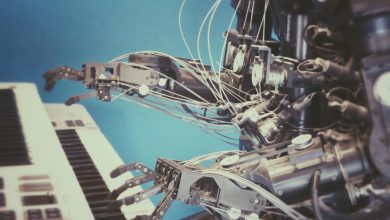
AI is transforming industries at a rapid pace, yet many organisations are realising that their infrastructure may not be ready to support its advanced workloads. The most recent Cisco AI readiness survey revealed that only 13% of business leaders currently feel their organisation’s infrastructure is prepared for AI adoption.
Businesses initially approached AI readiness with confidence, focusing on creating strategies, experimental environments, and encouraging AI adoption. However, as AI progresses, new challenges emerge, especially in scaling AI workloads and maintaining the stability and performance of the IT environment as more AI is integrated and deployed.
Questions such as, “Can my infrastructure handle additional AI workloads?,” “How can I prevent introducing instability into existing systems?” and “What investments should I make to further improve my AI readiness?” are at the forefront of leadership concerns today.
AI readiness is not static. The rapid pace of AI advancement means that organisations must continually adapt, as they did through transformations before it, such as the migration to cloud. A dynamic approach with an eye to always-on performance is essential to successfully navigating AI adoption.
With that in mind, there are three ways that executives can help assure continued performance throughout their readiness journey toward AI adoption.
Navigating AI Readiness with Assurance
-
Assuring Performance in a Hybrid Environment
For many organisations, the path to AI readiness involves operating in a hybrid environment where AI and non-AI workloads coexist. Similar to how organisations have to calculate and identify which workloads are appropriate for refactoring to the cloud and which are not.
In a hybrid AI environment, organisations need visibility across their entire infrastructure to ensure that AI and non-AI workloads play nicely together. Without it, resource-hungry AI applications and workloads can dominate capacity. This imbalance can lead to degradations or outages that risk damaging productivity and the bottom line.
A state of AI readiness means having constant dynamic assurance that the infrastructure can support a hybrid mix of workloads now and in the future. It must underpin the AI services and experiences organisations provide to stakeholders. AI may also have a direct role to play in assisting with infrastructure management to enable all workloads to co-exist.
-
Assuring Performance in a Distributed Architecture
AI can run on centralised infrastructure, but this approach is not always optimal or efficient. To operate with speed, reduced latency, and higher performance, many organisations are adopting ‘data centre-in-a-box’ solutions. These architectural approaches allow AI workloads to run at the network edge, closer to where it’s most used or needed.
The Cisco AI readiness survey highlighted this shift, revealing that 36% of respondents are improving their ability to deploy AI models to edge devices. Similarly, 35% are improving the way compute resources are allocated to AI tasks to increase their AI readiness.
For organisations employing distributed architectures to power their AI ambitions, visibility and assurance play a role in maintaining high performance and fault-resilience against degradation. Continuous readiness testing is also a necessity, ensuring these infrastructures can handle any current or future AI workloads.
-
Assuring Performance to Maintain Digital Resilience
AI adoption introduces new complexities into infrastructure, including unfamiliar scenarios and conditions. Whether driven by AI-based decisions or interactions with other systems or infrastructure, these complexities can disrupt overall performance.
To see and understand these new performance patterns, and how they impact the broader environment, operations teams need complete infrastructure visibility. This allows them to detect issues promptly, no matter where they arise. By doing so, they can prevent downtime and disruptions that impact performance and application delivery.
This is not only necessary from a break-fix perspective. Today’s reliance on third-party networks that sit beyond organisations’ ownership and control create challenges for any team tasked to quickly understand where and why a disruption is happening so that they can prevent degraded performance.
Getting ready for AI is not a matter of if but when, and new approaches to assurance are helping organisations on that readiness journey, seeing and understanding the entire digital footprint from user to application.




